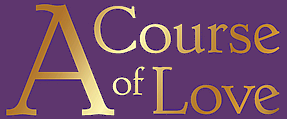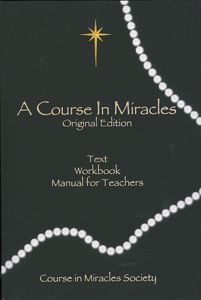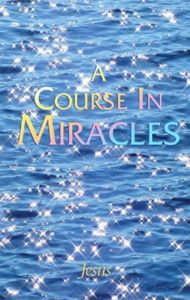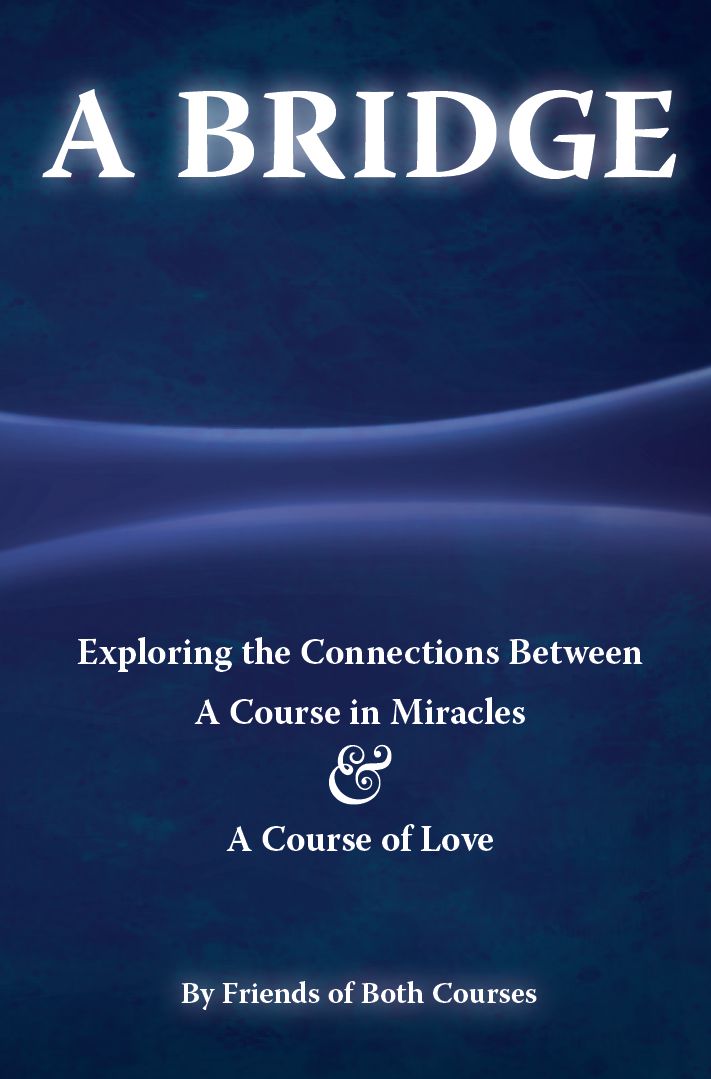ACIM & ACOL
Is A Course of Love related to A Course in Miracles?
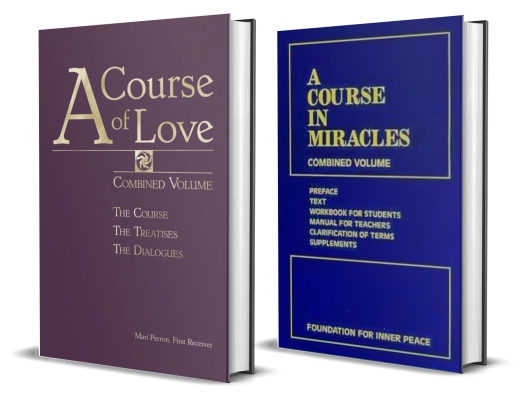
While this is a matter for each reader to decide, the overwhelmingly positive reviews of A Course of Love (ACOL) on Amazon.com seem to indicate that a very large number of its readers found it to be truly helpful.

As of this writing (Jan 2024), the Combined Volume of A Course of Love has a 4.7-star average rating from 620 reviewers.
Some reviewers state they are familiar with A Course in Miracles (ACIM) and recognize the voice in ACOL as the same one that dictated ACIM. As one reviewer on Amazon.com put it,
These writings are the true pen of Jesus as in A Course in Miracles. Same voice, same message mostly but updated language style for contemporary readers. Humanity called this forth, it was delivered. This book goes everywhere with me and has changed my life.
Not only is there a significant portion of ACIM readers who have embraced ACOL as a continuation of ACIM, but there are also publishers of ACIM who have been supportive of ACOL. For example, the publishers of some of the more complete editions of ACIM, which have kept the messages received by Helen Schucman in a pristine state, such as ACIM OE (Original Edition)—published by Course in Miracles Society (CIMS)—and ACIM Sparkly Edition, have been openly supportive of ACOL, and have had a synergistic relationship with us at Take Heart Publications as we recognize that ACIM and ACOL work hand-in-hand.
Why would we need another course if we already have A Course in Miracles?
What some ACIM readers understandably ask when they come to know of ACOL is why there would be a need for Jesus to extend what already seems to be a complete course.
This question is not so different from the one some Bible readers ask when they hear of ACIM, or even the one some ACIM readers ask when they come to know of the existence of new ACIM editions that add hundreds of pages to the version that was authorized by Helen Schucman for publishing in 1976.
This pattern has been observed in other circles too; for example, traditional Christianity views the Gnostic gospels as apocrypha, Theravada Buddhism contends that the extended body of teachings held by Mahayana Buddhism (e.g. Tibetan and Zen Buddhism) is questionable, and some orthodox Muslims consider Sufism as heresy.
Just as it is not possible for either ACIM or ACOL readers to prove that Jesus is the source of their respective texts, so it is not possible for them to determine whether ACIM or ACOL can really help you start living by the truth of who you are and be an expression of love or Christ-consciousness on earth.
We simply invite you to approach either work with an open mind and heart, and to draw your own conclusions based on reading each work directly.
What we can do here is to offer you glimpses of what ACOL says in relation to ACIM, to help you feel if this new material resonates with you. ACOL explicitly states that it is related to ACIM:
This is a course in miracles. . . . Where the original Course in Miracles was a course in thought reversal and mind training, a course to point out the insanity of the identity crisis and dislodge the ego’s hold, this is a course to establish your identity and to end the reign of the ego.
This is in line with ACIM’s stated goal of setting the direction to what lies beyond the ego, rather than establishing how to live in the world of form once the ego has been dislodged.
This course remains within the ego framework, where it is needed. It is not concerned with what is beyond all error because it is planned only to set the direction towards it. (ACIM, FIP Edition, C-in-3)
ACIM’s effective teachings and practices lead us toward removing the blocks to the awareness of love’s presence. Once this goal is accomplished, ACOL comes to offer practical guidance on how to act in the world as we sustain such awareness.
A Course in Miracles and A Course of Love work hand-in-hand because the change of thinking taught within A Course in Miracles was a change of thinking about yourself. It attempted to dislodge the ego-mind that has provided you with an identity that you but think you are. A Course of Love then followed in order to reveal to you who you truly are.
The need for a continuation of ACIM is also related to our tendency to keep acting as learning beings even after perception has been corrected. Accurate perception is a steppingstone to knowledge, but as long as the pattern of learning remains, direct access to inner knowledge will be hampered.
Learning is needed only until perception is cured. The perception of your separated state was the illusion for which a cure was needed—and within A Course in Miracles offered.
Since the mind is the realm of perception we have taken a step away from the realm of perception by appealing to the heart and the heart’s ability to learn in a new way. You are thus instructed not to apply your thought and your effort, your usual means of learning, to this Course of Love.
This Course is not for the mind but for the heart. It is not a way of thought and effort but a way of feeling, of ease, and of direct relationship.
Again I say to you, in the direct relationship achieved in union, no learning is required. Until you have truly recognized unity, which may come before or after completing the “Treatise on the Nature of Unity and Its Recognition,” you continue to perceive of yourself as a learning being. This is the only reason for this continuation of the coursework provided in A Course in Miracles.
While you continue to put effort into learning what cannot be learned, as you continue to see yourself as a student seeking to acquire what you do not yet have, you cannot recognize the unity in which you exist and be freed from learning forever.
Again we see how ACIM and ACOL complement each other seamlessly. As perception is corrected by the invaluable teachings and practices offered in ACIM, ACOL comes to show us how to sustain awareness of Christ-consciousness and keep direct access to Unity’s wisdom or gnosis while we continue living in physical form. As ACIM puts it,
It cannot be emphasized too often that correcting perception is merely a temporary expedient. It is necessary only because misperception is a block to knowledge, while accurate perception is a steppingstone towards it.
The whole value of right perception lies in the inevitable realization that all perception is unnecessary. This removes the block entirely. You may ask how this is possible as long as you appear to be living in this world. That is a reasonable question. (ACIM, FIP Edition, T-4.II.11)
Not only does ACOL thoroughly answer that reasonable question but it also guides us through applying it in practice: The Course describes the foundational principles on which our true Self rests and seals the rift between mind and heart; The Treatises guide us through integrating those principles into everyday life; The Dialogues mark the end of the time of learning and place us on the way of direct knowledge.
An introduction to the contents of each of those three books that form A Course of Love is offered on this page: What is ACOL?
Are there differences between the two Courses?
Certainly there are. The question is whether you see differences as a necessary change in approach or direction once ACIM’s goal of dislodging the ego is accomplished, or as a sign of incompatibility between the Courses.
Here again we simply ask you to let your own heart or Inner Teacher be your guide, instead of getting into an intellectual quagmire of confusion over use of terms and apparent philosophical discrepancies. Listen to these words from ACIM:
This is not a course in theoretical philosophy, nor is it concerned with precise terminology . . . All terms are potentially controversial, and those who seek controversy will find it.
Yet those who seek clarification will find it as well. They must, however, be willing to overlook controversy, recognizing that it is a defense against truth in the form of a delaying maneuver. (ACIM Sparkly Edition, Preface 16-17)
Doesn’t it seem plausible that Jesus would not just dictate a course but also observe its results and deliver a “course correction” if he noticed that the movement was veering off its intended direction? Hasn’t Jesus himself stated that knowledge is shared with us on a “need to know” basis? ACIM says,
Remember that you who want peace can find it only by complete forgiveness. You never really wanted peace before, so there was no point in knowing how to get it.
This is an example of the “need to know” principle, which was established by the plan of Atonement long before the CIA. No kind of knowledge is acquired by anyone unless he wants it or believes in some way he needs it. (ACIM, Circle of Atonement’s Complete Edition, T-1.48.18)
Aren’t you tired of endlessly reading and re-reading, going over the same lessons again and again, trying to figure things out, uncertain if your interpretation is correct, and puzzled by the contradictory views and interpretations given by different teachers? Haven’t you longed to finish with studying and to arrive at a place of rest? To finally be able to express who you really are with ease and joy? ACOL says,
A major difference between A Course in Miracles and A Course of Love has to do with the movement into the Time of Christ, a time of direct learning in union and relationship with God.
The word “learning” is loosely used here for no learning is needed in union and relationship. Learning is not meant to last. This is why even this coursework comes to an end. It comes to an end here and now as we move past study and learning to observation, vision, and revelation.
You who have so sought happiness without finding it, rejoice. It is not lost. . . . Have you not long lamented that if you knew what would bring you happiness you would surely pursue it? Have you not long stated that if you knew what would bring meaning to your life you would surely do it? Have you not long wished to know your purpose? To be given a goal that would fulfill the longing in you?
And have you not become impatient with advice, with teachers and with courses of study? Have you not felt at the limit of your patience with instruction? . . . Are you not ready for certainty above all else? Are you not ready to be done with studying and to begin with living?
This time we take a direct approach, an approach that seems at first to leave behind abstract learning and the complex mechanisms of the mind that so betray you.
We take a step away from intellect, the pride of the ego, and approach this final learning through the realm of the heart. This is why, to end confusion, we call this course A Course of Love.
Still you might wonder whether some differences are not just changes in approach, but are in contradiction to fundamental tenets of ACIM.
Don’t you think that ACIM apparently contradicts fundamental tenets of the Bible? Hasn’t Jesus reinterpreted several biblical statements to reassure us that his new teachings in ACIM do not contradict the Bible? For example,
Let us reconsider the Biblical statement “My yoke is easy and my burden light” in this way: “Let us join together, for my message is light.” (ACIM Original Edition: Text-Tx.5.IV)
Collecting a couple of passages from ACOL and presenting them side by side with ACIM’s quotes that apparently contradict them do not prove that the texts are incompatible, let alone that they come from different sources.
All contradictions can be shown to represent the new approach ACOL takes after perception of our separate state is corrected, leading us in the direction of establishing our identity while we remain in physical form.
To mention an example, some ACIM readers cite passages from ACOL in which the body is said to be able to become an embodiment of love, of divinity, and contrast them with ACIM’s quotes stating that the body was not made by love and is a limit on love. This apparent incompatibility is resolved when you look at other passages from ACIM that raise this possibility:
The body can become a sign of life, a promise of redemption, and a breath of immortality to those grown sick of breathing in the fetid scent of death. Let it have healing as its purpose. Then will it send forth the message it received and by its health and loveliness proclaim the truth and value that it represents. Let it receive the power to represent an endless life, forever unattacked. . . .
The simple way to let this be achieved is merely this—to let the body have no purpose from the past, when you were sure you knew its purpose was to foster guilt. . . . This leaves no space in which a different view, another purpose, can be given it. You do not know its purpose. (ACIM Original Edition: Text-Tx.27.II)
Other apparent contradictions are dealt with in the booklet A Bridge (please see the section below). As with nearly everyone in the ACOL community, our appreciation for ACOL did not diminish in the least our appreciation for ACIM.
ACOL itself recognizes the immense value of its predecessor, giving ACIM credit for helping usher in a new period in the history of humanity.
Many ACOL readers feel that when they revisit their beloved Course in Miracles, they are able to bring to the foreground certain aspects of ACIM that were always present, but in the background.
ACIM continues to offer invaluable teachings that are truly helpful for dislodging the ego’s hold on our minds. Whether it is required to read it before starting ACOL remains a matter for each reader to decide.
We understand that Jesus will keep extending his presence and teachings to those willing to call forth ever wider circles of ideas from within the infinite mind of God.
Helen Schucman and Bill Thetford called forth a way to inner peace; their joint appeal echoed the voices of myriad people who faced daily conflicts and wished to find a way to living in peace. That was a time of tension and unrest, epitomized by the Cold War and the Vietnam War.
Mari Perron’s powerful call to “work for God,” was brought into clarity by her friend Mary Love’s dream of a new course in miracles. In their close relationship, they together found ways to live in the awareness of love’s presence while facing loss, tragedy, and the many heartbreaks common to our time.
Ours is a time of division, hostility and hatred, epitomized by the September 11 attacks and the resurgence of conflict along religious, racial, political and economic lines.
We can only expect Christ’s message to be further expanded as new calls emerge and willing scribes are found to give voice to his limitless light.
Nothing real can be threatened.
Nothing unreal exists.
Herein lies the peace of God.
&
Everything real is of God.
Nothing unreal exists.
Love is all there is.
If you are interested in a deeper exploration of the intersections between ACIM and ACOL, consider reading A Bridge, a booklet that answers many questions, such as:
- Why A Course of Love?
- Why would there be “A Course of Love” if love cannot be taught?
- What is the purpose of ACOL and how does it relate to the purpose of ACIM?
- How does ACOL compare to ACIM?
- Is the world and the body real? ACIM famously says that the world is an illusion. Does ACOL contradict that?
- Does ACOL denigrate the mind?
- ACOL tells us that “the time of learning” is over. What does this mean?
- ACIM speaks of how entrenched the ego is. ACOL tells the reader that “the ego-self is gone.” Why this big shift?
- ACOL holds out the possibility of “direct learning.” How does this happen?
- ACOL tells us that “the time of the Holy Spirit” is over. Please explain.
- ACOL seems to celebrate us as being “The Accomplished,” with the ego now gone. Sounds too good to be true!
- ACOL speaks of the fulfillment of the Way of Jesus, and then introduces the Way of Mary. What does this mean?
Further resources:
A Perspective on ACIM Sequels by Dr. Monte M. Page, Emeritus Professor of Psychology
A Course in Miracles and A Course of Love – A Reflection by Douwe Van der Zee, author of The Power of Childhood and From Intellect to Intelligence
Is the World an Illusion? by Mari Perron, with dozens of very insightful comments from readers
A Course of Love Compared to A Course in Miracles, by Celia Hales
I Love Them Both, a thorough and illuminating review published on Amazon.com by Michael Mark, a reader who found ACOL to be fully in line with the non-dual teachings of ACIM
